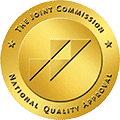Heroin is an illegal, highly addictive drug made from morphine. Morphine is a natural substance taken from the seed pod of various opium poppy plants.
The use and trade of heroin are restricted in many countries and regions due to its addictive properties and potential for abuse. Yet it remains one of the most sought-after drugs on the black market.
Heroin falls within Schedule I on the DEA drug list.
Heroin is an opioid analgesic agent which was originally used in the relief of severe pain associated with surgical procedures, myocardial infarction or pain in the terminally ill and for the relief of dyspnea in acute pulmonary edema.
Diamorphine is the commercial name for (heroin) which is a narcotic analgesic that may be habit-forming. It is a controlled substance (opium derivative) listed in the U.S. Code of Federal Regulations, Title 21 Parts 329.1, 1308.11 (1987). Sale is forbidden in the United States by Federal statute. (Merck Index, 11th ed)
Internationally, heroin is controlled under Schedules I and IV of the Single Convention on Narcotic Drugs. As heroin, it is illegal to manufacture, possess, or sell in the United States and the UK. However, under the name diamorphine, heroin is a legal prescription drug in the United Kingdom.
Heroin is extracted from opium poppy plants, it is then processed to produce different forms usually by mixing the drug with chemicals or other substances. The chemical makeup of heroin is as follows:
(5α,6α)-7,8-Didehydro-4,5-epoxy-17-methylmorphinan-3,6-diol diacetate (ester),3,6-Diacetylmorphine,7,8-Dihydro-4,5-alpha-epoxy-17-methylmorphinan-3,6-alpha-diol diacetate,Diacetylmorphine,Diamorphine,Heroin,O,O’-Diacetylmorphine.
Heroin is a highly addictive substance that affects the limbic reward system in your brain. The drug produces intense feelings of pleasure, but this may lead to problems with blood flow because it constricts vessels and blocks important nutrients from reaching cells necessary for survival.
A person’s health can quickly decline if they are addicted or have been using heroin regularly since there will not be enough vital oxygen getting through their body tissue.
If not treated correctly with medical help through drug rehab treatment programs where tools are provided to live a life of sobriety, this type of addiction can many times be deadly.
The half-life of Heroin means the amount of time that stays in your system before it is fully absorbed. The half-life of heroin in humans is approximately two to three minutes before it is absorbed into the bloodstream which means that it is extremely fast acting.
Traces of heroin is use in someone’s system or urine is usually gone after just 2 days. The rate at which a person metabolizes food depends on how long the heroin metabolites will stay around. Drug tests generally look for heroin metabolites, which are created when the liver metabolizes heroin. Metabolites stay in the system longer than the actual intoxicant.
The onset of heroin’s effects is dependent on the method of administration. Taken orally, heroin is totally metabolized in vivo via extensive first-pass metabolism into morphine before crossing the blood-brain barrier; so the effects are the same as orally administered morphine.
Take by injection, heroins acetyl groups facilitate rapid crossing into the brain. Once in the brain, heroin is rapidly metabolized into morphine by removal of the acetyl groups, therefore making it a prodrug for the delivery of morphine.
Subsequently, whether eliciting actions peripherally (on smooth muscle, skeletal muscle, kidney, lung, liver, or spleen tissue, for example) or on the central nervous system, it is ultimately the morphine metabolite of heroin that then binds with opioid receptors and produces the narcotic opioid effects commonly associated with the substance.
Internationally, diamorphine is a commercial term for heroin and it is used by a legal prescription drug in the United Kingdom.
It can be injected into a vein (‘mainlining’), smoked in its pure form on tinfoil, inhaled as smoke through the nose after smoking, snorted like cocaine, mixed with water and drunk, or added to cannabis joints.
It can also be taken orally but this is not very common. Some people “slam” heroin by mixing it with water, alcohol, or crushed over-the-counter medication (e.g., cold remedies) using a syringe with a needle that dispenses the drug directly into the bloodstream.
Heroin is injected, smoked, snorted, or taken orally. It is highly addictive both physically and psychologically. It also carries a high risk of overdose, particularly if it’s mixed (or substituted) with other drugs.
Heroin use may be difficult to detect because its effects are much different compared to other drugs. A person who has overdosed on heroin will experience:
People who use heroin can become addicted almost immediately with just one dose. They often build up a tolerance quickly which means they need more heroin just to feel normal and prevent withdrawal symptoms.
Heroin addicts will go through stages of drug-seeking behavior too. This means they’ll try to obtain the drug in any way possible regardless of the consequences or risks involved.
Heroin is typically a white or brown powder that varies in consistency and purity. It’s often easily dissolved in liquids such as alcohol or water. This can make it easy for heroin to be mixed with other drugs like a strong analgesic and fentanyl.
This practice of mixing has been blamed for accidental overdose deaths among people using both substances together.
The purity of heroin varies enormously. This means that the strength of the drug’s effect can vary dramatically from batch to batch. The following pictures show different forms of this drug which include white powder, brown powder, and a black sticky substance known as tar heroin.
Tar heroin is highly impure heroin created using crude production methods. This form of the drug varies in consistency, color, and purity. It can feel like thick tar or hardened resin. Users often smoke tar heroin rather than inject it, due to the high possibility of abscesses at the injection site.
In America, heroin addiction is a common occurrence that does not discriminate between social or economic status. Whether you’re from the inner city area of Detroit, Michigan, or a rural town in Kansas City, Missouri, you’re equally at risk of becoming addicted to heroin.
Heroin today is more potent and cheaper than ever before. No one is safe from heroin addiction. Also, heroin is usually injected intravenously, which, without the proper dosage (which is nearly impossible to find out for regular users) and technique, can lead to an overdose.
Heroin addiction can be very difficult to overcome because it alters your brain’s chemical structure so drastically that it takes months or even years for your brain to return to normal function.
It should be noted that there are several treatment modalities available at different levels of care that reflect various types of therapies. These include inpatient treatment facilities, residential rehab facilities, and outpatient programs.
The most effective form of treatment for heroin addiction is inpatient treatment and rehab. In these centers, patients will get specialized help that goes beyond just providing therapy – it also provides them with tools to live life without drugs or alcohol again; once they’re ready (and willing).
Many people find this progress much more rewarding than any “high” obtainable through their use of substances such as heroin/morphine etc., which can lead some users back into dangerous behavior quickly after discharge from rehab. Knowing what caused patients to use drugs or alcohol in the first place will help prevent future triggers while in recovery.
Many individuals quickly find that the rewards of progressing through a treatment program far outweigh the “high” they formerly gained from drug use.
Effective forms of therapy used during treatment often include cognitive behavioral therapy, individual and group counseling, and 12-step programs.
In 2017 according to data obtained by the CDC 494,000 people in the united states stated that they are currently heroin users and as many as 886,000 people used heroin at least once the last year. Approximately three out of four heroin users misused prescription opioids before beginning to use heroin.
Opioid addiction in the United States was classified as an epidemic in 2017 by Health And Human Services similar to covid-19 because it is a danger to public health, the economy, and national security. Heroin Overdoses continued to rise from 2002 to 2013 when they nearly nearly quadrupled, resulting in 8,257 heroin-related overdose deaths in 2013.
Many people blame the opioid epidemic on pharmaceutical companies who reassured the medical community that it was safe to prescribe opiods to patients and used incentive plans for their medical sales reps to sell more opiods. This saga was chronicled in the Netflix documentary Dopesick and the Crime of the Century on HBO.
Recovery statistics for heroin use are very promising with the right types of treatment. After completing treatment, 98% of heroin users are free from addiction. After three years, 88% are still fully sober.
Opium and morphine date as farback as 3400 B.C., when sumarians and mesopotamians farmed poppy seeds in the region that is now referred to as the middle east. Once other neigboring civilations learned the effects of the poppy seeds, it became more widely adopted across egypt and India. Later, the British Empire would go on to buy their opium from India.
In 1805, Friedrich Sertürner, a French pharmacist discovered how to isolate one of opium’s active ingredients. That led to the future discovery in 1874 by English chemist Charles Romney & Alder Wright who performed experiments mixing opioid compounds with acids, eventually coming up with diacetylmorphine which is also known as Diamorphine and is still commercially produced to this day.
Opium dens came into popularity in the 19th century. Opium dens are places where opium was sold and smoked. Opium is a different form of heroin and it became prevalent throughout the world. In pop culture, opium dens are usually portrayed with Chinese mobsters running a den where people are smoking opium and sleeping.
In reality, this wasn’t very far from the truth. The pharmaceutical company Bayer first used the term “heroin” as its brand name for Diamorphine in 1898. The United States government made heroin illegal in 1924.
Many famous celebirites became addicted to heroin throughout the years and wrote about their experiences in memoirs. William S Burroughs detailed his life story of heroin addiction, withdrawal and crime in the book JUNKIE: Confessions of an Unredeemed Drug Addict
Get confidential help 24/7. Call now for:
Related Articles
Get Help Now
CDC. (2022, May 23). Heroin. Centers for Disease Control and Prevention. Retrieved December 20, 2022, from https://www.cdc.gov/opioids/basics/heroin.html
NIDA. (2022, December 16). Heroin drugfacts. National Institutes of Health. Retrieved December 20, 2022, from https://nida.nih.gov/publications/drugfacts/heroin
Medical Advice Disclaimer
Magnified Health Systems aims to improve the quality of life for people struggling with substance use or mental health disorder with fact-based content about the nature of behavioral health conditions, treatment options and their related outcomes. We publish material that is researched, cited, edited and reviewed by licensed medical professionals. The information we provide is not intended to be a substitute for professional medical advice, diagnosis or treatment. It should not be used in place of the advice of your physician or other qualified healthcare providers.

Dr. Bickley graduated from U.C. Irvine with honors: Phi Beta Kappa, Golden Key International Honor Society, Cum Laude. He has been featured on national radio and print media. He is also a frequent lecturer at National Conferences. He holds an A.S. degree in Drug & Alcohol Studies, and two B.A. degrees in Criminology & Psychology, and masters and doctoral degree in Clinical Psychology. He is a licensed California Drug & Alcohol Counselor Level II, a licensed Clinical Supervisor and is certified in treating Eating Disorders.
Call Us Now, Our Admissions Team Is Standing By And Available 24/7.

Head Office Location:
1530 N Federal Hwy Lake Worth, FL 33460
Contact & Feedback:

We are here for you.
We are here for you, Call us and get started!
